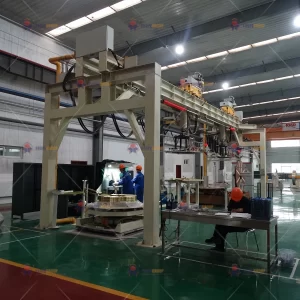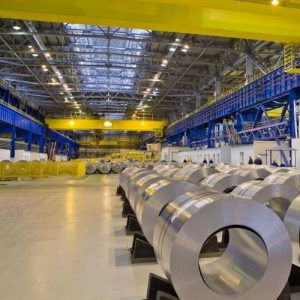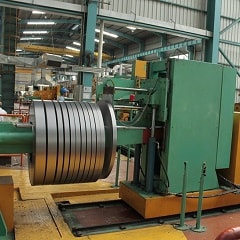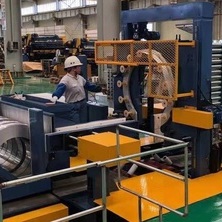Understanding the Welding Line
At its core, the welding line is a combination of a framework and individual equipment units that work in harmony to provide an efficient and high-quality welding process. By automating and streamlining the handling and welding of brass copper strips, this equipment ensures consistent results and optimizes productivity.
The Framework and Individual Equipment Units
The welding line's framework serves as the backbone of the entire system. It provides structural support and stability to the various equipment units. These individual units, aligned on the same axis, facilitate the smooth transfer of copper coils between each stage of the welding process.
Equipment Alignment for Efficient Transfer
The alignment of the individual equipment units is a critical factor in the welding line's efficiency. By maintaining a synchronized axis, the equipment units enable the seamless transfer of copper coils, reducing downtime and maximizing productivity. This alignment ensures that the coils flow smoothly through each stage of the welding process, minimizing bottlenecks and optimizing workflow.
Versatility and Flexibility with Alternating Upenders
One standout feature of the welding line is the use of alternating upenders. These upenders can be utilized interchangeably, providing increased versatility and flexibility in the welding process. This feature is particularly beneficial when handling different types of copper coils or accommodating changes in production volume. The ability to adapt quickly and efficiently enhances overall operational efficiency.
Vacuum Chuck Integration for Precise Positioning
Precise positioning is crucial for achieving high-quality welds in brass copper strip manufacturing. The welding line incorporates a vacuum chuck system that works seamlessly throughout the entire process. This integration ensures the secure and stable placement of the copper coils, eliminating any movement or misalignment that could compromise welding quality. The result is consistent and accurate positioning, leading to flawless welds.
Enhancing Quality and Consistency with Rotate-Lifter Function
To further enhance the quality and consistency of the welds, the welding line incorporates a rotate-lifter function. This function ensures that the copper coils are positioned correctly for welding, optimizing the welding parameters and improving the overall strength and durability of the joints. The rotate-lifter function adds an extra layer of precision to the welding process, resulting in high-quality and reliable welds.
Convenient Operating Design for Maintenance and Repair
Maintenance and repair are inevitable aspects of any industrial equipment. The welding line's design takes convenience into consideration. The transit platform features strategically placed gaps that provide easy access to the lower part of the equipment. This design simplifies maintenance and repair tasks, reducing downtime and ensuring seamless operation.
Benefits of Using a Welding Line
Using a brass copper strip vacuum handling and welding line offers a multitude of benefits to manufacturers. These benefits include:
Enhanced efficiency and productivity through automation and streamlined processes.
Consistent and high-quality welds, improving the overall strength and durability of the joints.
Reduction in manual labor, minimizing the risk of errors and increasing operational efficiency.
Versatility and flexibility to handle different types of copper coils and accommodate changing production demands.
Cost savings through optimized resource utilization and reduced material wastage.
FAQs
What are the main advantages of using a brass copper strip welding line?
A brass copper strip welding line offers enhanced efficiency, consistent quality, reduced manual labor, versatility, and cost savings.
Can a welding line accommodate different sizes of copper coils?
Yes, welding lines can be adjusted to handle various sizes of copper coils, making them suitable for different production requirements.
Are welding lines only used in specific industries?
No, welding lines find applications in various industries, including electrical, automotive, HVAC, appliances, and renewable energy sectors.








Reviews
There are no reviews yet.